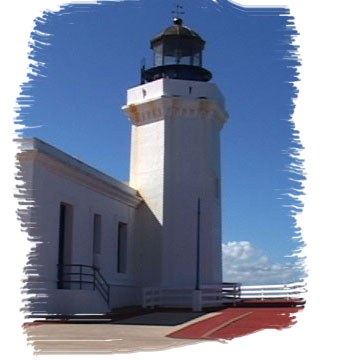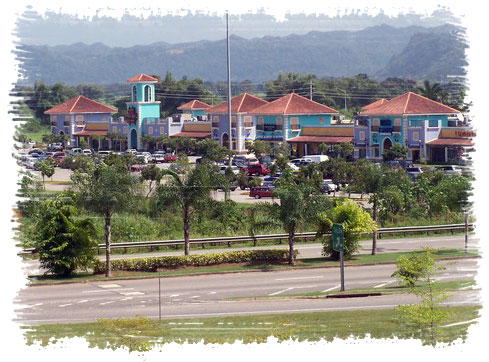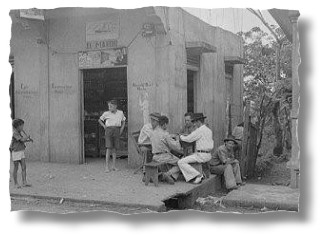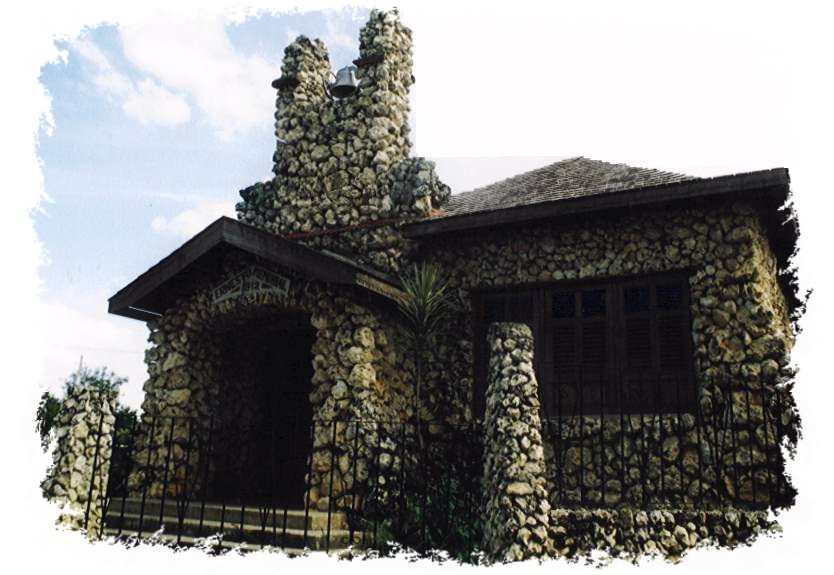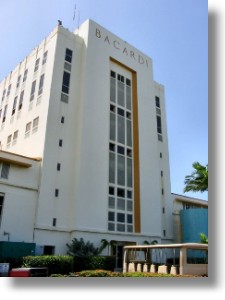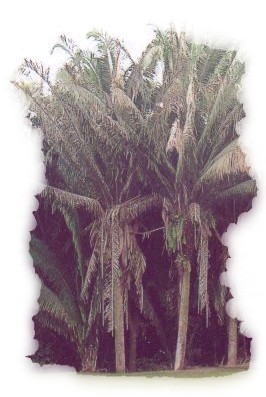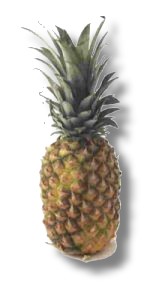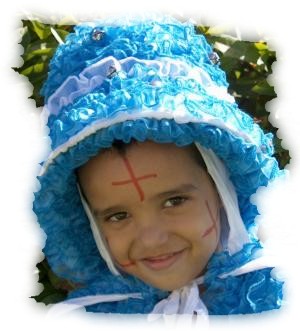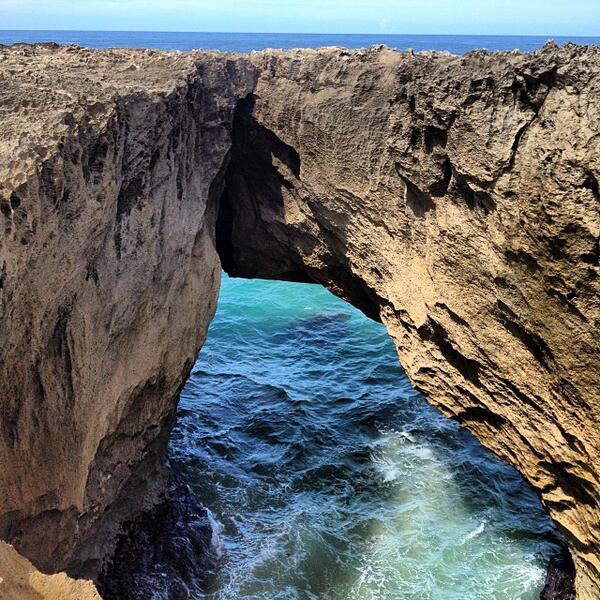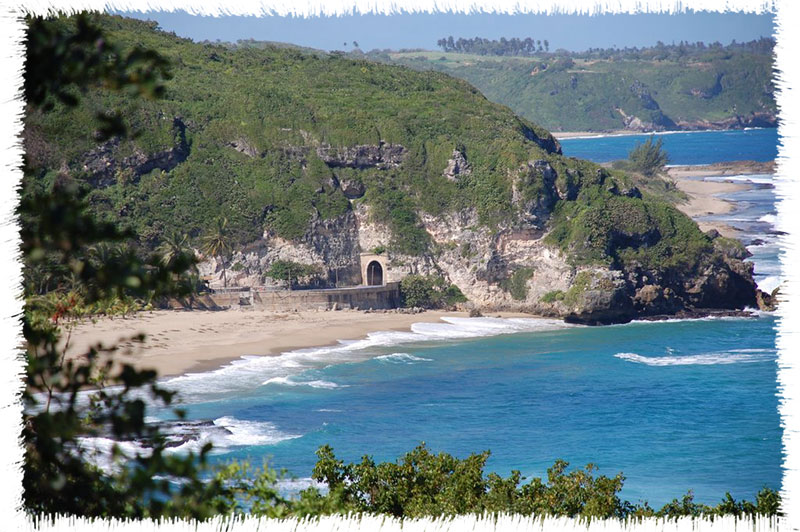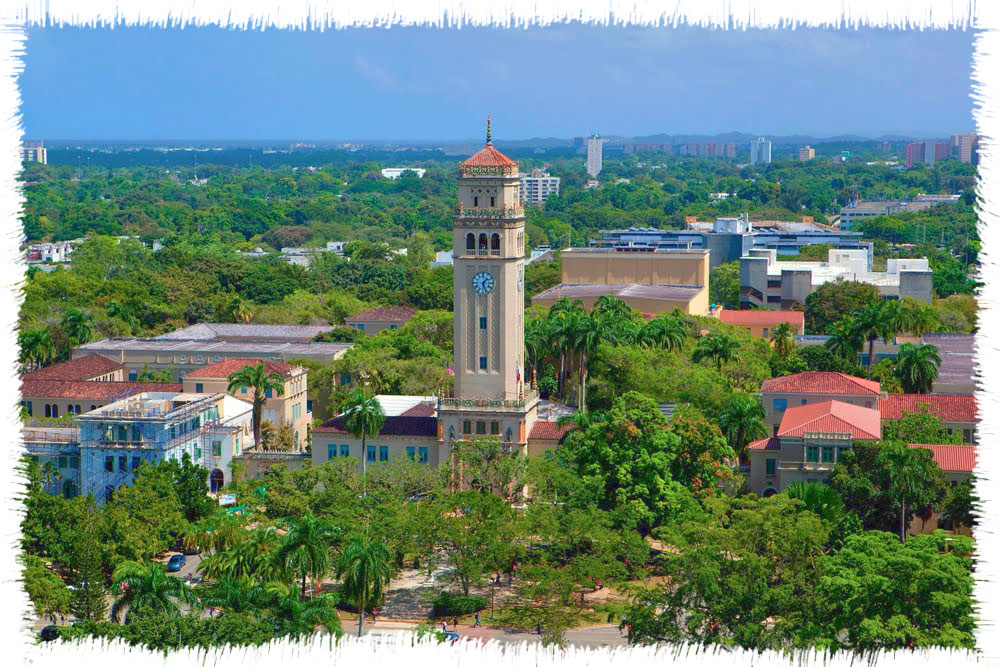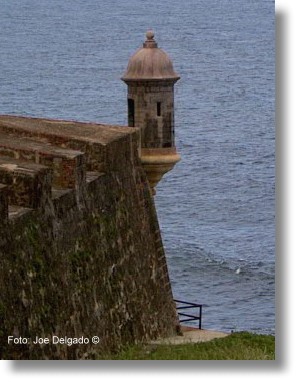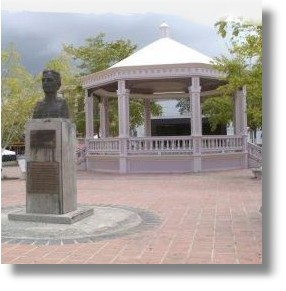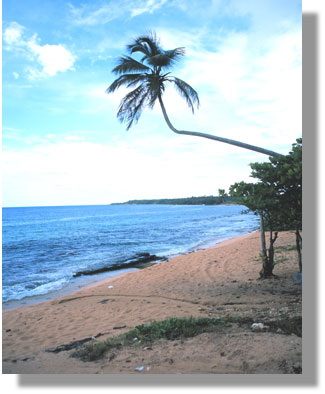Arecibo, Puerto Rico Captain Correa Villa Arecibo (ah-re-SEE-boh) is a municipality on the north coast of the island. It is known as the “Village of Captain Correa,” in honor of the heroic acts of Antonio de los Reyes Correa, who defended the village of Arecibo from the attack by the English in 1702. The Spanish colonel was awarded the Royal Effigy medal by the Spanish crown and was promoted to captain. Arecibo residents celebrate various festivals during the year. Among the most important are the Patron Saint Festival in honor of San Felipe in April and the Arecibo Carnival, which takes place in the month of February. Arecibo is...
Barceloneta, Puerto Rico
Barceloneta, Puerto Rico Industrial City Barceloneta is known as “The Industrial City” and “The Home Town of Sixto Escobar.” The Patron Saint is Our Lady of Mount Carmel and the festival in her honor is celebrated in July. Barceloneta is rich in tradition and boasts an extensive literary and musical folklore. Its trovadores and improvisadores (traditional folk singers and improvisers) perform a ten-line verse form called décimas campesinas, religious or patriotic themes being the most popular. Barceloneta is located on the north central coast of the Island. It is bordered on the north by the Atlantic Ocean, on the south by the municipality of Florida, on the east by...
Bayamón, Puerto Rico
Bayamón, Puerto Rico Pork Ring City Bayamón (bah-yah-MON) is known as the “pork rind city”. The patron saint’s festival is dedicated to the Holy Cross, and it is held late in April and the beginning of May. The city’s economy is based on commerce and manufacturing. The municipality is located in the north central area of Puerto Rico and is bordered on the north by Toa Baja and Cataño, on the south by Aguas Buenas and Comerío, to the east by Guaynabo and to the west by Naranjito, Toa Alta, and Toa Baja. There are five rivers in the municipal territory: Bayamón, Minillas, La Plata, Cuesta Arriba, and Hondo....
Camuy, Puerto Rico
Camuy, Puerto Rico Romantic City Camuy (kahm-WEE) is known as the “Romantic City”, the “Sandwalkers” City” and the “City of the Taino Sun”. The patron saint is Saint Joseph and the patron saint’s festival is celebrated in March. The municipality is in the northern central area of Puerto Rico and is bordered on the north by the Atlantic Ocean, on the south by Lares and San Sebastián, on the east by the municipality of Hatillo, and on the west by Quebradillas. It is located in the northern coastal plain, but comprises undulations known as the “llano de Quebradillas”. Historically the economy of Camuy has depended on agriculture, notably sugar...
Cataño, Puerto Rico
Cataño, Puerto Rico The Town That Refused To Die Cataño (kah-TAH-no) is known as the “antechamber of the capital”, “the town that refused to die”, “the forgotten town”, “the crab catchers’ town”, and “the ferry-riders’ town”. It’s the smallest town in Puerto Rico. The patron saint’s festival is held in honor of Our Lady of Mount Carmel. Cataño is located on the north coast of Puerto Rico, on the shores of the San Juan harbor and is bordered on the north and east by the Atlantic Ocean; by Toa Baja on the north and west; and by Guaynabo and Bayamón on the south. The terrain is low-lying and flat...
Corozal, Puerto Rico
Corozal, Puerto Rico The Birthplace of Volleyball Corozal (ko-ro-ZAHL) residents are known as known as “The plantain farmers,” because of the huge numbers of plantains planted in the mountains of the municipality. The municipality is also called the “birthplace of volleyball” and the “Capital of the Center of the Island”. Corozal’s patron saint festival honors the Holy Family and is held in the month of January. The town also has a Plantain Festival. Corozal is located in the west central region of the island, close to the north coast. It is bordered on the north by Vega Alta and Toa Alta, on the south by Orocovis, Barranquitas and Naranjito,...
Dorado, Puerto Rico
Dorado, Puerto Rico Golden City Dorado (do-RAH-do) is known as the “cleanest town in Puerto Rico” and the “golden city”. The patron saint is Saint Anthony of Padua. The town of Dorado is located on the north coast of Puerto Rico. It is bordered on the north by the Atlantic Ocean, on the south by Toa Alta, on the east by Toa Baja, and on the west by Vega Alta. The hydrographic system of the town is comprised of the La Plata River (formerly called the Toa) and its tributaries, the Cocal, Nuevo and Lajas rivers. There are red, black, and white mangroves at the mouths of these rivers....
Florida, Puerto Rico
Florida, Puerto Rico City of The Cayenalisa Pineapple Florida (flo-REE-dah) is known as the “Tierra del Río Encantado,” the “Tierra de los Mogotes,” and the “Pueblo de la Piña Cayenalisa”. . Florida is the only municipality composed of one single barrio, Florida Adentro. Its patron saint is Nuestra Señora de la Merced , whose festival is held during the last week of September. Florida is located between the northern coast of the island and the Cordillera Central mountain range. The municipality lies north of Ciales, south of Barceloneta, east of Arecibo and west of Manatí....
Guaynabo, Puerto Rico
Guaynabo, Puerto Rico Puerto Rico’s First Settlement Guaynabo (gwei-NAH-bo) is located in the northern part of Puerto Rico. It is known as “el primer poblado de Puerto Rico,” “la ciudad de los conquistadores,” “la capital del deporte,” “las ruinas de Caparra,” and “el pueblo del Carnaval Mabó” (Puerto Rico’s first settlement, city of the conquistadors, sports capital, ruins of Caparra, Mabó carnival town). The municipality is located on the northern coast of the island is bounded by the San Juan bay and the town of Cataño to the north, Aguas Buenas to the south, Bayamón to the west, and San Juan to the east. Its territory lies within Puerto...
Hatillo, Puerto Rico
Hatillo, Puerto Rico Milk Industry Capital Hatillo (ah-TEE-yo) is known as the “Milk Industry Capital”, “Hatillo of our Hearts”, the “Land of the Green Fields”, the “Town with no Soup” and “The Ranchers” Town”. The annual patron saint’s festival is dedicated to Our Lady of Mount Carmel. The town also celebrates the traditional Day of the Masks, on December 28th, the Day of the Holy Innocents. Hatillo is located in northwest, north coast of Puerto Rico. Its bordered by the Atlantic Ocean on the north, the town of Utuado on the south, Arecibo on the east, Camuy on the west, and briefly bordered by Lares on the southwest. The...
Isabela, Puerto Rico
Isabela, Puerto Rico The Northwestern Garden Isabela (ee-sah-BAI-lah) is known as “the garden of the northwest”, "los gaillos" (the young roosters) and “the town of quesitos de hoja” (traditional Puerto Rican white string cheese). The patron saint of Isabela is Saint Anthony of Padua. The town of Isabela is in the northern coastal plains. It is bordered on the north by the Atlantic Ocean, on the south by the town of San Sebastián, on the east by Quebradillas, and on the west by Aguadilla and Moca. The southern region is rimmed by the Aymamón Mountains, which are an extension of the Jaicoa range. Karst topography features include towers, sinkholes,...
Manatí, Puerto Rico
Manatí, Puerto Rico Metropolitan City Manatí (mah-nah-TEE) is known as the “Athens of Puerto Rico,” an appellation that arose from the development of the town as a cultural center during the first decades of the 20th century. Manatí is located on the north coast of Puerto Rico. Is bordered on the north by the Atlantic Ocean, on the south by Ciales and Morovis; on the east by Vega Baja; and on the west by Barceloneta and Florida. The town is in the northern coastal plain and the karst area, the latter including may caves, haystack and sinkhole formations. Manatí has many beaches, the most famous of which are Mar...
Morovis, Puerto Rico
Morovis, Puerto Rico The Island Except Morovis Morovis (mo-RO-vis) is known as the Island Except Morovi. The phrase used is originated in a cholera epidemic that devastated Puerto Rico in 1853. Historical records show that Morovis was the only municipality where no cases were reported, and every time the topic was mentioned people would say “All of the island, except Morovis”. Our Lady of Mount Carmel is the patron saint, and the festival in her honor is held in July. Morovis is located in the northern part of Puerto Rico. The municipality is located in the humid northern hills, and the northernmost part of the territory is located in...
Quebradillas, Puerto Rico
Quebradillas, Puerto Rico The Pirate’s Hideout Quebradillas (ke-brah-DEE-yahs) is known as “the pirate’s hideout” or “the pirate city,” “the cooperative city,” and “Guajataca corner”. The municipality is located on the north coast of the island. The patron saint’s day festival is dedicated to Saint Raphael the Archangel, and is celebrated on the days around the Saint’s Day, October 24. Tourist attractions include the El Guajataca Hotel, a theme park, and Guajataca Lake, where there is sports fishing. Quebradillas is located on the north coast of the island. The town is bordered on the north by the Atlantic Ocean, on the south by Guajataca Lake (San Sebastián), on the east...
Río Piedras, Puerto Rico
Río Piedras, Puerto Rico University City Río Piedras has left indelible marks on the modern history of Puerto Rico. This former municipality, now a part of San Juan, has played an important role in the development of the island’s transportation, education and commerce. The growth of Río Piedras is related to its strategic position. Because of its nearness to the capital, the region became the main supplier of food and potable water for San Juan. However, the development of the urban center was slow, as the first settlers in the region were plantation and ranch owners who had no interest or need to establish an urban nucleus. The economic,...
San Juan, Puerto Rico
San Juan, Puerto Rico The Fortified City San Juan (sahn HWAHN) is known as “the walled city,” “the capital city”, “the paved city,” and “colonial city”. The residents are known as capitalinos and senadores, the latter is an allusion to their baseball team. The city of San Juan is located on the north coast of Puerto Rico and it is the capital of island. The colonial part of the city is known as a historic and cultural center, in which the military architecture built from the 16th to the 18th century is its outstanding feature. The old port is also an important port of call for ships that sail...
San Sebastián, Puerto Rico
San Sebastián, Puerto Rico St. Sebastián Del Pepino San Sebastián (sahn se-bahs-tee-AHN) most widely nicknamed “San Sebastián del Pepino”, are also called “the hammock town”. The townspeople are known as pepinianos and patrulleros (patrollers). The patron saint is Saint Sebastian, the Martyr. San Sebastián is located in the central mountain range of Puerto Rico. Is bordered on the north by Isabela and Quebradillas, on the east by Lares, on the south by Las Marías, and on the west by Moca and Añasco. The town lies in the geographical region of the humid northern hills. The mountainous topography includes elevations between 100 and 300 meters (330 to 985 feet) above...
Toa Alta, Puerto Rico
Toa Alta, Puerto Rico City of the Toa Toa Alta (TO-ah AHL-tah) is known as the “Toa City,” the “Cradle of Poets” and the “City of Josco.” The Toa part of the name comes from the name the Tainos gave to La Plata River. The word means “mother” in the Taino language and was frequently spelled “Thoa.” The patron saints of the municipality are San Fernando Rey and Nuestra Señora de la Concepción. The municipality is bordered on the north by the municipalities of Dorado and Toa Baja, on the east by the municipality of Bayamón, on the south by Naranjito and on the west by Vega Alta and...
Toa Baja, Puerto Rico
Toa Baja, Puerto Rico Valleys of the Toa City Toa Baja (TO-ah BAH-hah) is known as the “City of the Toa Valleys”, the “Underwater City” and the “People of the Plains”. The patron saint is San Pedro Apóstol. Toa Baja is bordered on the north by the Atlantic ocean, on the west by the municipality of Dorado, on the south by Toa Alta and on the east by the municipalities of Cataño and Bayamón. Geographically, it is part of the region called the northern coastal plain. Its land is very fertile. The municipality’s hydrological system consists of La Plata (Toa) River, the longest river on the island, and the...
Vega Alta, Puerto Rico
Vega Alta, Puerto Rico Town of Squaters Vega Alta (VAI-gah AHL-tah) is known as the “Squatters Town” and its residents are called the “Pottery Makers.” According to popular history, the “Squatters Town” nickname comes from the habit of sugar cane workers to resting in a squatting position while waiting for the train that carried the cane, because the station did not have any seats. Vega Alta is located on the north coast of Puerto Rico. It is bordered on the north by the Atlantic Ocean, on the south by Morovis and Corozal, on the east by Dorado and Toa Alta and on the west by Vega Baja. The municipality...
Vega Baja, Puerto Rico
Vega Baja, Puerto Rico City of “Syrup” Vega Baja (VAI-gah BAH-hah) is known as the “City of Melao Melao,” which refers to its past of growing sugar cane. It is also known as the “City of Orange Groves” because oranges were the most commonly grown fruit in the town. The patron saint is Nuestra Señora del Rosario. The municipality is located in the central part of the north coast of Puerto Rico. Is bordered on the north by the Atlantic Ocean, on the south by Morovis, on the west by Manatí and on the east by Vega Alta. It is located in the northern coastal plain and the karst...

